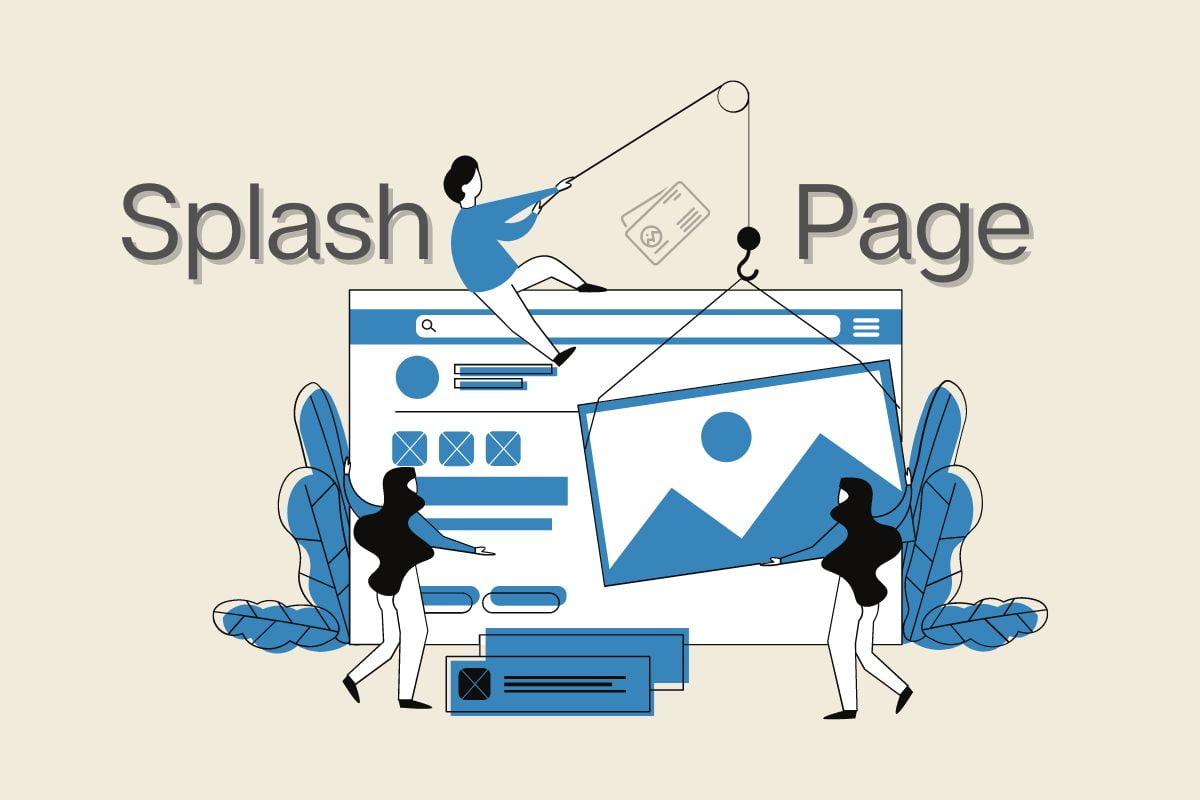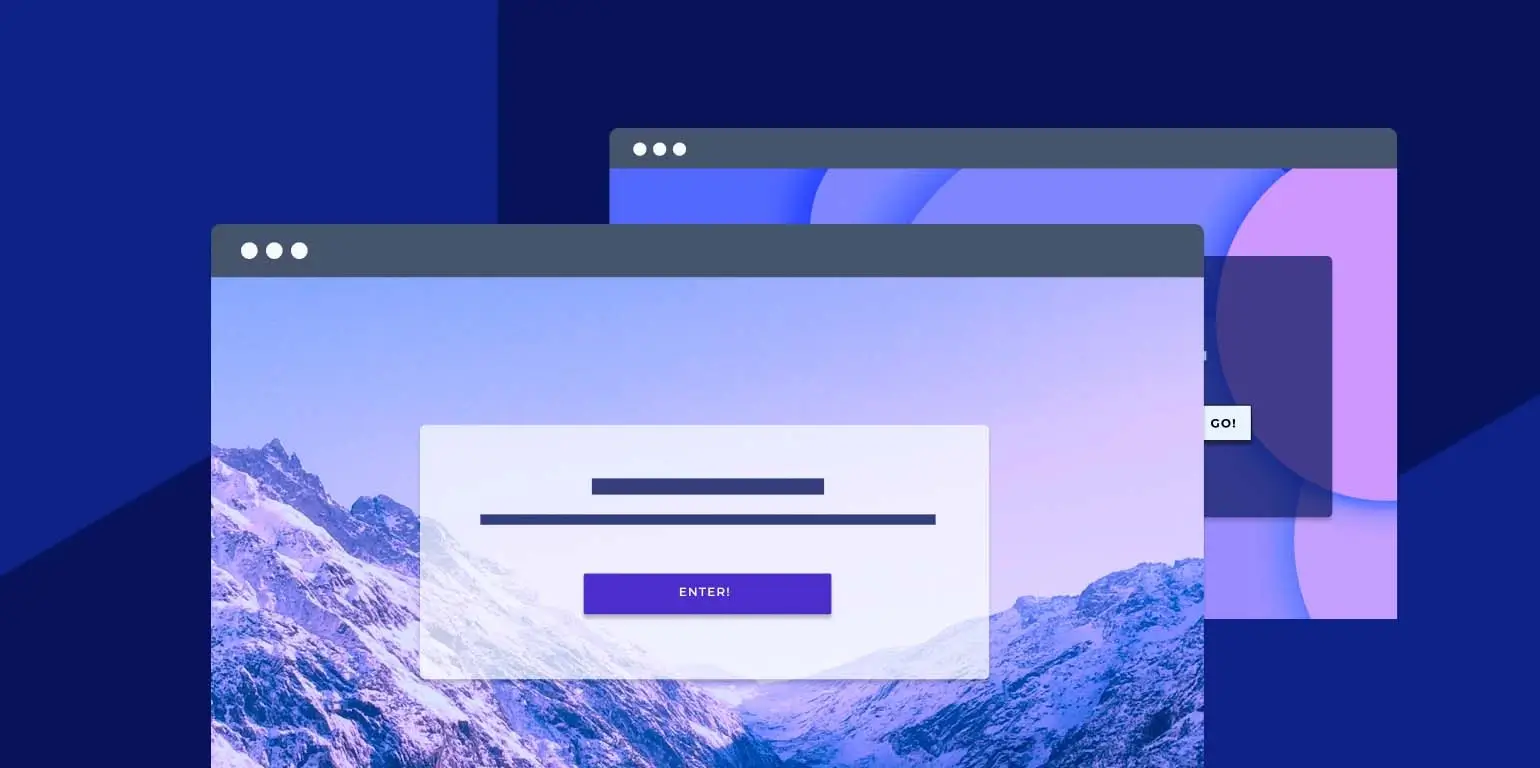A splash page is a unique, standalone web page that appears before the main content of a website. It serves as a gateway or a prelude to the primary site, offering users a brief introduction, a promotional message, or a choice between different site versions. Often, splash pages are used to showcase a brand’s identity, deliver important announcements, or direct traffic based on user preferences such as language selection or content maturity.
The Purpose of a Splash Page
The splash page is more than just an introductory screen; it’s a strategic element in web design. Businesses utilize splash pages to achieve several goals:
- Branding: A well-designed splash page can reinforce a brand’s identity, using visuals, logos, and messaging that align with the brand’s core values.
- Announcements: Splash pages are ideal for delivering time-sensitive information, such as upcoming events, promotions, or important updates.
- User Segmentation: By offering choices, like language selection or entry into different sections of the site, splash pages help in segmenting users and directing them to the most relevant content.
- Legal Compliance: Some websites, especially those with age-restricted content, use splash pages to comply with legal requirements by asking users to confirm their age.
Splash Page vs. Landing Page: What’s the Difference?
While both splash pages and landing pages are crucial in web marketing, they serve different purposes. A landing page is designed specifically for marketing or advertising campaigns, guiding visitors towards a specific action like signing up for a newsletter or making a purchase. On the other hand, a splash page is more about introduction and segmentation, often acting as a welcome screen rather than a direct marketing tool.
Key Elements of an Effective Splash Page
To create a successful splash page, certain elements must be carefully crafted:
- Visual Appeal: The design should be visually engaging, using high-quality images, videos, or animations that capture the user’s attention immediately.
- Clear Messaging: The message should be concise and to the point. Whether it’s a welcome message, a promotional offer, or an important update, clarity is key.
- Call to Action (CTA): While splash pages are not typically CTA-heavy, it’s still important to include a clear path forward, whether that’s entering the main site, selecting a language, or acknowledging an announcement.
- Loading Speed: Splash pages should load quickly to avoid frustrating users. A slow splash page can lead to high bounce rates and negatively impact user experience.
- Mobile Responsiveness: With a growing number of users accessing websites via mobile devices, ensuring that the splash page is mobile-friendly is crucial.
Splash Page Examples: Learning from the Best
To understand how to create an effective splash page, it’s helpful to look at some real-world examples:
- Nike: Nike’s splash page often features full-screen images or videos highlighting a new product or campaign. The design is minimalist, with a strong focus on visuals and a clear CTA directing users to the main site.
- Adobe: Adobe uses splash pages to showcase new software releases or updates. These pages are visually appealing and informative, providing users with a brief overview before they proceed to the main content.
- Marvel: Marvel’s splash pages are designed to immerse users in the brand’s universe. They often feature animated graphics, cinematic videos, and links to various sections of the site, such as comics, movies, and merchandise.
- The New Yorker: The New Yorker uses splash pages to promote subscription offers or special issues. These pages are simple, with a focus on typography and a clear CTA to subscribe or read more.
How to Create a High-Performing Splash Page
Creating a splash page that resonates with your audience requires careful planning and execution. Here are some tips to ensure your splash page performs well:
- Know Your Audience: Understanding who your visitors are and what they expect is crucial. Tailor your splash page content to meet their needs and preferences.
- Keep It Simple: Avoid cluttering your splash page with too much information. The goal is to provide a brief, impactful introduction that encourages users to explore further.
- Use Engaging Media: High-quality images, videos, or animations can make your splash page more engaging. However, ensure that these elements do not slow down the page loading time.
- Test and Optimize: A/B testing different designs, messages, and CTAs can help you determine what works best. Continuously monitor performance metrics and make adjustments as needed.
- Ensure Accessibility: Your splash page should be accessible to all users, including those with disabilities. Use alt text for images, ensure high contrast for text, and consider using voice-over options for videos.
The Impact of Splash Pages on SEO
While splash pages can enhance user experience and brand recognition, they can also pose challenges for SEO. Search engines may not always index splash pages properly, particularly if they lack substantial content or links to the main site. To mitigate these issues:
- Include HTML Content: Ensure that your splash page includes readable HTML content that search engines can index. This could be a brief description or a welcome message that includes relevant keywords.
- Provide a Clear Path: Make sure there is a visible link to the main site that search engines can follow. This helps ensure that your primary content is still accessible and indexable.
- Optimize for Speed: Slow-loading splash pages can negatively impact your site’s overall SEO. Optimize images and media to ensure fast loading times.
- Use Meta Tags Wisely: Include meta tags with relevant keywords in the splash page’s HTML code. This can help improve visibility in search engine results.
Conclusion
Splash pages are a powerful tool in web design, offering a unique way to introduce visitors to your site, deliver important messages, and guide user interactions. When designed effectively, they can enhance brand recognition, improve user experience, and even contribute to marketing efforts. However, it’s essential to balance creativity with functionality to ensure that your splash page does not hinder your site’s overall performance or SEO.






